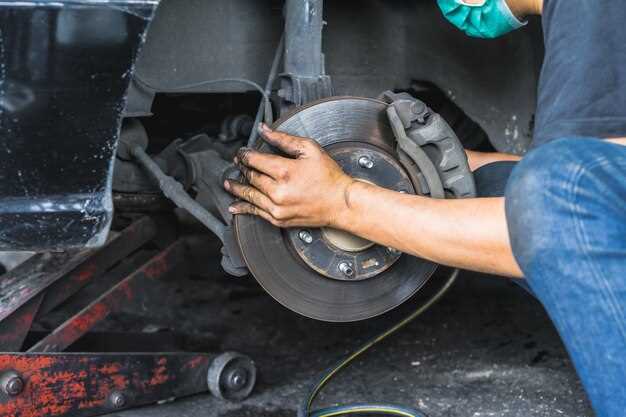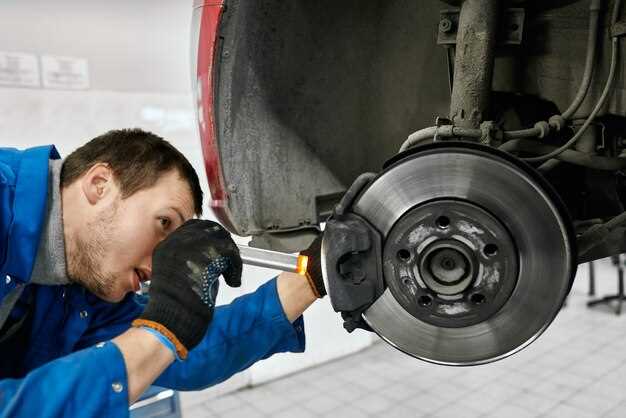
Brakes are a critical component of any vehicle, especially for service trucks that require reliability and safety on the road. However, over time, it is common for these brakes to develop issues, notably squealing noises that can indicate underlying problems. Addressing this noise promptly is essential, not only to ensure the longevity of the brake system but also to maintain the overall functionality of the truck.
Squealing brakes are often a sign of wear on the brake pads, lack of lubrication, or even issues with other components in the braking system. Understanding the source of the noise is the first step in effectively resolving the issue. By diagnosing the problem correctly, truck owners can save both time and money while ensuring their service vehicle operates smoothly and safely.
This guide will walk you through the steps necessary to fix squealing brakes on your service truck with ease. With the right tools and a bit of know-how, you can eliminate that annoying noise and restore the integrity of your vehicle’s braking system.
Identifying the Source of Brake Noise on Service Trucks
Brake noise can be a significant issue for service trucks, affecting performance and safety. To effectively address this problem, it is crucial to identify the exact source of the noise. Several factors can contribute to brake noise, including worn-out components, improper installation, or even environmental conditions.
Worn Brake Pads: One of the most common causes of brake noise is worn brake pads. As pads wear down, they can produce a squealing or grinding noise when they come into contact with the rotor. Regular inspection of brake pads for thickness and signs of wear is essential to prevent further damage.
Disc and Rotor Condition: The condition of the brake disc and rotor also plays a vital role in noise issues. Scoring or glazing on the surface of these components can lead to noise during braking. Ensure that disc rotors are inspected for any irregularities, which may necessitate resurfacing or replacement.
Brake Hardware: The brake hardware, including calipers and shims, can also lead to noise problems. Loose or damaged calipers may cause rattling or squeaking sounds. Properly securing and maintaining these parts is crucial for optimal brake function.
Moisture and Debris: Environmental factors such as moisture and debris can result in brake noise. Rust can form on rotors, leading to surface corrosion that produces noise during braking. Regular cleaning and maintenance can help mitigate these effects.
Improper Installation: Finally, improper installation of brake components can lead to severe noise issues. This includes incorrect alignment or inadequate lubrication of parts. Always follow manufacturer guidelines and best practices to ensure that all components are installed correctly.
By systematically examining these potential sources of noise, service truck operators can effectively identify and resolve brake noise issues, ensuring improved performance and safety.
Step-by-Step Guide to Replacing Brake Pads and Rotors

Replacing brake pads and rotors is essential for maintaining the safety and performance of your service truck. Begin by gathering necessary tools: a socket set, brake cleaner, jack stands, and a torque wrench.
First, ensure the vehicle is parked on a flat surface. Loosen the lug nuts on the wheel where you will be replacing the brake components, but do not remove them entirely. Subsequently, use a jack to lift the truck and secure it with jack stands for safety.
Once the truck is secured, remove the lug nuts completely and take off the wheel. This exposes the brake assembly, allowing for inspection of the current brake pads and rotors.
Check for wear on the brake pads. If the pads are worn down to less than a quarter inch, they should be replaced. Remove the caliper by unfastening the bolts that secure it to the bracket. Be careful not to damage the brake line while doing so.
After removing the caliper, slide the old brake pads out of their slots. Take this opportunity to inspect the rotor for any scoring or excessive wear. If the rotor appears damaged or under the manufacturer’s minimum thickness specification, it will need to be replaced.
To remove the rotor, unfasten the retaining screws, if present, and slide the rotor off the hub. Clean the hub surface with brake cleaner to ensure the new rotor fits properly. Place the new rotor onto the hub, securing it with retaining screws if necessary.
Install the new brake pads into the caliper bracket, making sure they are aligned correctly. Reattach the caliper over the new pads and secure it with the caliper bolts. Ensure all connections are tight to avoid any issues during operation.
Before lowering the truck, it’s crucial to pump the brake pedal a few times. This action seats the brake pads against the rotor, ensuring proper contact and function. Once you feel resistance on the pedal, it’s safe to lower the truck.
Finally, replace the wheel and hand-tighten the lug nuts. Lower the vehicle completely and then use a torque wrench to tighten the lug nuts to the manufacturer’s specified torque settings. After completing these steps, take your service truck for a test drive to ensure that everything is functioning smoothly and to confirm that the squealing issue has been resolved.
Preventive Maintenance Tips to Avoid Future Squealing Brakes

To prevent issues with squealing brakes in your service truck, regular maintenance is essential. One of the first steps is to inspect the brake pads consistently. Worn pads are a common cause of brake noise, and replacing them before they deteriorate can save you from more significant problems.
Another crucial aspect is ensuring that the brake rotors are in good condition. Regularly check for signs of warping or scoring. Resurfacing or replacing the rotors as needed will improve braking performance and minimize noise production.
Proper lubrication of brake components is equally important. Use high-temperature grease on the caliper slides and backing plates to reduce friction. This can significantly decrease the likelihood of squealing when brakes are applied.
Additionally, monitor your truck’s brake fluid levels and quality. Old, contaminated fluid can lead to improper brake function, contributing to noise and other brake-related issues. Regularly flushing the brake system and replacing the fluid can help maintain optimal performance.
Lastly, avoid aggressive driving habits that can increase wear on brake components. Smooth acceleration and braking will not only extend the life of your brakes but also reduce the chances of encountering squealing noises.




